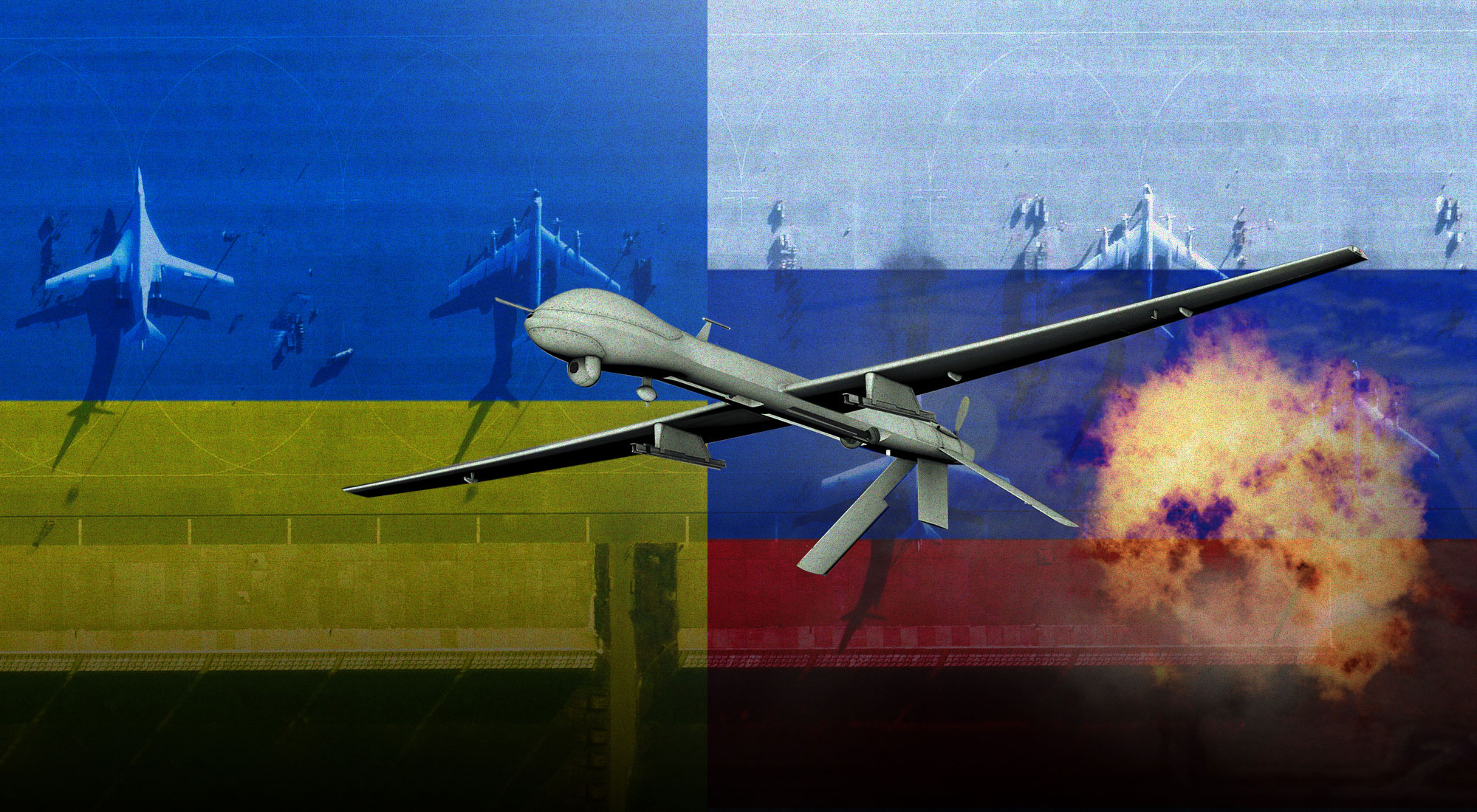On 6th February 2020, the US announced the killing of Qassim Al-Rimi, the Yemen-based leader of Al-Qaeda in the Arabian Peninsula, following a counter-terrorism operation. President Trump declared that Al-Rimi’s death will weaken Al-Qaeda and is another step toward eliminating the security threat the terrorist group poses to the United States. So, what are the dimensions and implications of this counter-terrorism operation? And how will it affect the future of Al-Qaeda in Yemen?
The emergence and expansion of Al-Qaeda in Yemen
The origin of Al-Qaeda in Yemen dates back to the late 1980s with the return to the country of thousands of native Yemenis who had been fighting in Afghanistan against the Soviet army. They came back battle-hardened and deeply indoctrinated in extremist “jihadi” ideology which was then supported by the West as a weapon against the Soviet Union.
However, the movement did not have a clear or unified organizational structure until 2009. It was then a collection of separate groups and cells such as the Aden-Abyan Islamic Army founded by terrorist Zein Al-Abideen Al-Mehdar in the mid-1990s, Yemen Soldiers Brigades, the Islamic Jihad, and other groups. The diverse nature of these groups only showed how fragmented Al-Qaeda was at the time.[1]
Nonetheless, AQAP attracted significant global attention after it attacked the American destroyer, USS Cole, in the Yemeni port of Aden in October 2000, killing 17 American navy sailors and injuring 39. The AQAP then carried out many terrorist operations against oil facilities and foreign tourists. The 2007 attack on Spanish and Belgian tourists and the 2008 car bomb attack on the American embassy in Sanaa were some of the most prominent examples from this campaign.[2]
In 2009, the group appeared in its current name and structure after the merger of Al-Qaeda offshoots in Yemen and those fleeing the security crackdown in Saudi Arabia. Together, they formed AQAP under the leadership of Nassir Al-Wuhaishi. A remarkable evolution then happened in AQAP’s terrorist operations as they started targeting military sites and international institutions. The most notable was the attempt in 2009 to assassinate Prince Muhammad bin Nayef, former Saudi minister of interior and the failed attempt to blow up a Northwest Airlines flight en route to Detroit on Christmas Day that same year.[3]
AQAP exploited the political turmoil and security instability in Yemen following the 2011 popular uprising. It expanded its presence in Yemeni territories and declared the setting up of small cells in parts of Abyan and Shabwa in 2011-2012.[4]
After the civil war, following the Houthi militia’s coup against the legitimate government and the Saudi-led Arab coalition’s military intervention in 2015, AQAP further widened its presence by seizing control of the entire coast of Hadhramaut and the city of Al-Mukalla, the fifth largest city in Yemen, in September that year.[5]

Factors behind the expansion of Al-Qaeda in Yemen
Several factors contributed to the expansion and survival of Al-Qaeda in Yemen despite repeated military operations since the beginning of this century. The four broad factors are as follows:
It starts with the importance Al-Qaeda attaches to Yemen in its expansionist and strategic schemes. Yemen has always been in the minds of Al-Qaeda leadership since the group was formed. Although some people attribute that to the “Hadhrami” origins of Osama bin Laden, many other factors give Yemen a special place in Al-Qaeda’s scheme of things.
Umar Abdul Hakeem (aka Abu Mus’ab Al-Suri), one of the leaders of the group, published a book in 1999 which outlined the responsibility of the Yemeni people toward “the holy places and assets of Muslims”. The book pointed to some of these other factors. In the book, Abdul Hakeem refers to: (a) the demographic factor where the large population of Yemen provides opportunities to attract extremists and recruit them; (b) the geographical factor where the rugged mountainous terrain of Yemen “makes it an impregnable natural fortress for all the people of the Arabian Peninsula and a stronghold in which its people and mujahideen could take refuge”; (c) the proliferation of arms in Yemen; and (d) the open borders which enable free movement and military maneuvering for the group, in addition to other factors outlined in the book.
The political manipulation of extremist groups, including Al-Qaeda, has been another important factor. Some sources indicate that the regime of former Yemeni President Ali Abdullah Salih, or those aligned with it, used Al-Qaeda in its internal political conflicts. Sources say that Al-Qaeda, the Aden-Abyan Islamic Army, which was formed in Yemen in the 1990s, had been operating with the support of the then prominent military leader in the Salih regime, Ali Muhsin Al-Ahmar.[6] A report released in 2012 by the UN Panel of Experts to the Security Council Yemen Sanctions Committee accused President Salih of enabling both the Houthis and Al-Qaeda to expand their control over northern and southern Yemen after the 2011 uprising.[7] The report said that President Salih met the local emir of Al-Qaeda, Sami Dayyan, in his Sana’a office in 2011 in the presence of the then defense minister, Major General Muhammad Nassir Ahmad.[8] Besides, the often unwise way in which the former regime dealt with Al-Qaeda at the security level contributed to intensifying the threat the group posed. For example, in 2007, the regime released several Al-Qaeda members after they appeared to recant on the basis of some bogus self-critique and revision. These members soon re-joined the group.[9] Also, a number of dangerous operatives of Al-Qaeda, including Nassir Al-Wuhaishi and Qassim Al-Rimi who later assumed leadership of the group, escaped in 2006 from a supposedly high-security prison.[10]
Another factor has been the relationship between Al-Qaeda and other extremist groups, especially the Yemeni branch of the Muslim Brotherhood, Al-Tajammu Al-Yamani li’l-Islah (the Yemeni Assembly for Reform), which was largely viewed, particularly among southern Yemenis, as a sponsor and enabler of Al-Qaeda expansion in the south.[11] Most terrorist groups, including Al-Qaeda and ISIS, have either sprouted from the Muslim Brotherhood or have been influenced by its doctrinal approach.
Yet another factor has been the constant state of conflict and political instability in Yemen since the 1990s. This was followed by the civil war in 1994, recurrent clashes with the Houthis, the emergence of the secessionist Southern Movement in 2007, and the chaos caused by the Arab Spring, which created an ideal environment for Al-Qaeda to exist, thrive and expand.
The war on Al-Qaeda in Yemen
Since its cross-border threat became visible with the attack on the American destroyer USS Cole in 2000, Al-Qaeda in Yemen has been at the receiving end of a strong military campaign. This has been launched by the Yemeni security and military agencies and international and regional powers, particularly the US, which carried out a series of drone strikes against the leaders of the group in response to attacks on American targets in the US and overseas.
Since the first American counter-terrorism drone operation in Yemen in 2002, the US is estimated to have killed more than 1,000 Al-Qaeda militants in 289 counter-terrorism operations in Yemen using this technology.[12] These strikes have succeeded in eliminating many dangerous leaders of Al-Qaeda including Anwar al-Awlaki in 2011, Saeed Al-Shehri in 2013 (Al-Shehri was released from Guantanamo Bay in 2007), Nassir Al-Wuhaishi in 2015 (he unified AQAP under his leadership in 2009), Jamal Al-Badawi in January 2019 (he was the mastermind of the deadly attack on the USS Cole in 2000), and most recently Qassim Al-Rimi in February 2020.
Counter-terrorism efforts against Al-Qaeda in Yemen received a major boost after the Arab coalition forces entered Yemen to fight the Houthi rebels and other terrorist groups, especially AQAP. The UAE has played a prominent role by supervising the training of Yemeni forces, which eventually managed to ward off AQAP’s attacks on Aden before expelling the extremists.
With the UAE’s support, these forces succeeded in securing many cities and governorates and liberating them from AQAP, such as Lahij, Abyan and Shabwa, in addition to the Hadhramaut coast which had been under AQAP control for more than a year.[13] In 2016, with the support and active participation of the UAE, they liberated the strategic city of Al-Mukalla and the entire Hadhramaut coast from AQAP. The efforts continued to drive out AQAP elements and hunt them down until most of the territories under their control were liberated.
The UAE’s efforts have been overwhelmingly welcomed by the people of Yemen, especially the southerners who saw this as an opportunity to liberate their governorates from the grip of the terrorist group.[14] They were also welcomed internationally, which strengthened the UAE’s position and its role as an active partner in counter-terrorism operations, regionally and worldwide.
As a result of these counter-terrorism efforts against Al-Qaeda in Yemen, the group has significantly weakened in recent years. Some statistics show that the AQAP activities have declined steadily from 145 operations in mid-2017 to 128 during the second half of the same year, and then to only 62 operations in the first half of 2018.[15]
Implications of the killing of Qassim Al-Rimi
The operation carried out by the American forces in early February 2020 that killed the leader of AQAP, Qassim Al-Rimi, has many important implications:
- First: the war against Al-Qaeda in Yemen has met with significant successes on the ground. This sends a clear message to its groups and their leaders that they will be tracked down and targeted inside Yemeni territories or anywhere else in the world. This message has limited their movement and expansion efforts.
- Second: the operation shows how weak and vulnerable Al-Qaeda has become in Yemen. The targeting of its leader, Qassim Al-Rimi, and others before him such as Nassir Al-Wuhaishi, demonstrates the inability of the group to protect even its leaders. This has raised doubts within the group about the possibility of it being attacked from within.[16] Such doubts shake the group’s confidence in itself and its leaders and make it weak and internally fragmented.
- Third: the killing of the group’s leader Qassim Al-Rimi, and others before him, would diminish the group’s appeal to extremists and reduce its ability to recruit. This will reinforce its weakness, especially given the narrowing of support from Yemeni tribes in light of violence and repression it committed against the population in the areas it controlled during 2011-2017.
The future of the group:
The elimination of another leader of Al-Qaeda in Yemen will undoubtedly harm its future and image, as well as its ability to maintain cohesion and recruit more extremists. However, the magnitude of the effect that the killing of Qassim Al-Rimi will have on the group might not be that significant, due to the following reasons:
- First: Qassim Al-Rimi was not that strong a leader or very influential over AQAP. Although his name was associated with many terrorist operations that drew attention in and outside Yemen and qualified him to succeed the group’s leader Nassir Al-Wuhaishi, showed a lack of charisma and influence compared to his predecessors. As a result, the number of group’s operations declined and its cohesion weakened under his leadership.[17]
- Second: terrorist groups, such as Al-Qaeda, have proved their ability to produce other leaders to replace those who are eliminated. They are generally not affected by the absence of an individual unless he happens to be very charismatic and has moral influence over the group’s members; characteristics which Qassim Al-Rimi lacked.
- Third: AQAP had started to weaken since 2015 as a result of American strikes and the successful operations carried out by Yemeni forces supported and trained by the UAE in southern Yemen. In 2015, when Al-Rimi assumed leadership of AQAP, the group controlled large swaths of Yemen, with almost complete control over Al-Mukalla and wider influence in Shabwa and Abyan. However, the group retreated significantly since then under the heavy blows dealt on it by the Arab coalition and Yemeni forces that reduced it to merely scattered cells when Al-Rimi was killed. The death of Al-Rimi and the rise of new leadership are not expected to reverse this trajectory of decline unless the civil war becomes more intense and the security situation further worsens.
To sum up, although the death of Qassim Al-Rimi will inevitably weaken Al-Qaeda in Yemen and increase its organizational inertia, it is not expected to end its threat, as it can rebuild itself and produce a new leadership. However, the complete elimination of the group can only be achieved if necessary conditions are met; most importantly the ongoing military conflict in Yemen is brought to an end as it enables the group to intensify and expand its presence.
Regional and international efforts made in recent years – especially by the Arab coalition forces, the US and Yemeni forces – must continue to confront the group with the same vigor. The remarkable successes achieved so far must be built upon, because any decline in the efforts to fight the group will only allow it to regroup and rebuild, which will pose a great danger to Yemen, the region and the world in general.
[1] لمزيد من التفاصيل انظر: بشير البكر، القاعدة في اليمن والسعودية (بيروت: دار الساقي، 2010).
[2] Elisabeth Kendall, “Contemporary Jihadi Militancy in Yemen: How is the Threat Evolving?”, The Middle East Institute, Policy Paper, July 2018, p.3.
[3] “Profile: Al-Qaeda in the Arabian Peninsula”, BBC News, 16 June 2015.
[4] Elisabeth Kendall, op. cit. p.5.
[5] Summer Ahmed, “AQAP in South Yemen: Past and Present“, The Washington Institute, August 30, 2019.
[6] Elisabeth Kendall, op. cit. p.2.
[7] رغدة درغام، “تخبط أميركي وخليجي في اليمن والعراق”، صحيفة الشرق الأوسط، لندن، 27 فبراير 2015.
[8] “صالح والقاعدة . . تاريخ فاضح من التوظيف السياسي”، صحيفة الخليج، الشارقة، 12 أبريل 2015.
[9] Elisabeth Kendall, op. cit. p.2.
[10] “صالح والقاعدة . . تاريخ فاضح من التوظيف السياسي”، مرجع سابق.
[11] Summer Ahmed, op. cit.
[12] “America’s Counterterrorism Wars: Drone Strikes: Yemen”, New America, January 28, 2020.
[13] هاني سالم مسهور، ” الإمارات ومكافحة الإرهاب.. اليمن نموذجاً”، صحيفة البيان، دبي، 24 يناير 2019.
[14] Summer Ahmed, op. cit.
[15] Elisabeth Kendall, op. cit. p.9.
[16] ناجح إبراهيم، “أمريكا تخترق القاعدة والحرس الثوري”، صحيفة المصري اليوم، القاهرة، 21 فبراير 2020.
[17] Elisabeth Kendall, “Death of AQAP Leader Shows the Group’s Fragmentation—and Durability”, Washington institute, February 14, 2020.








